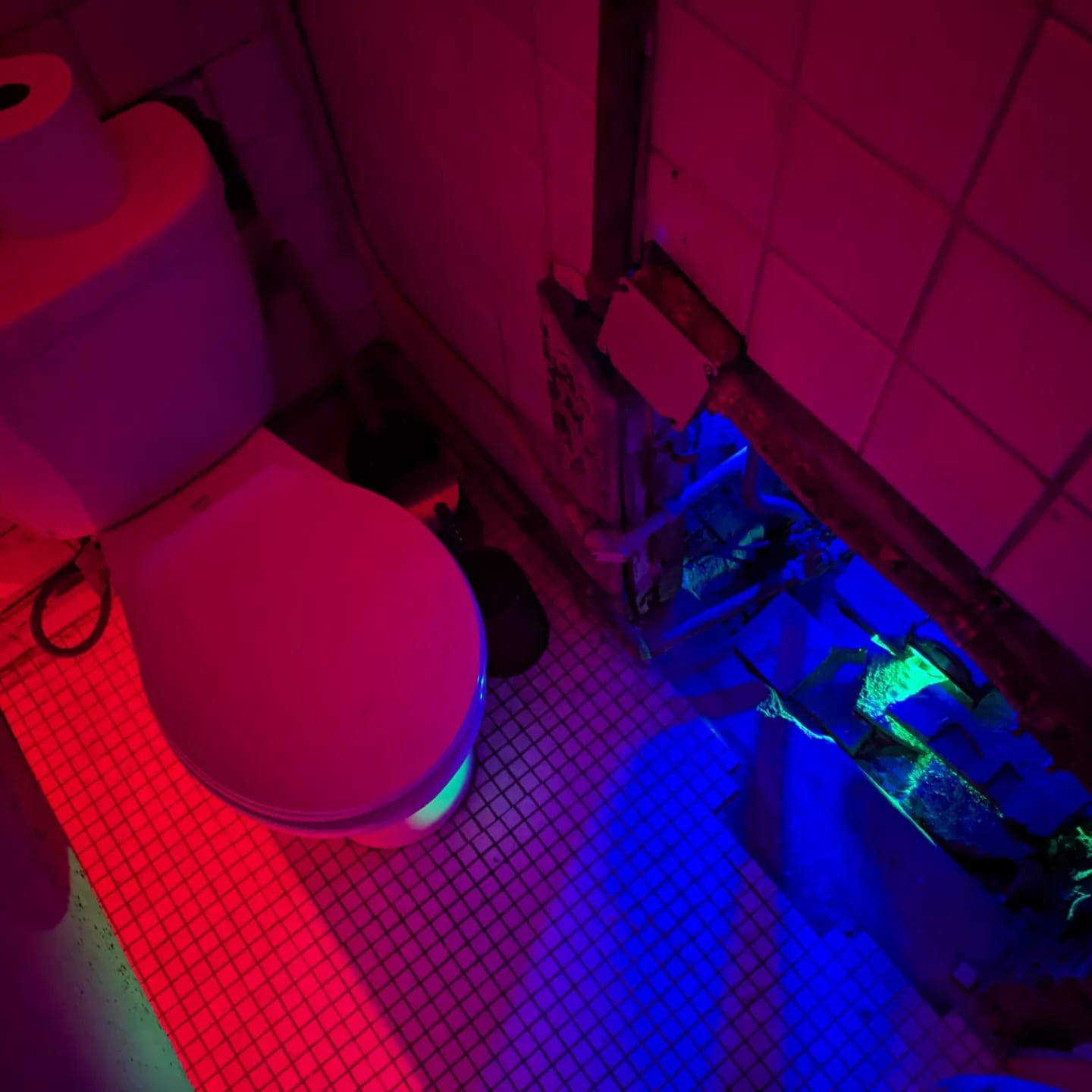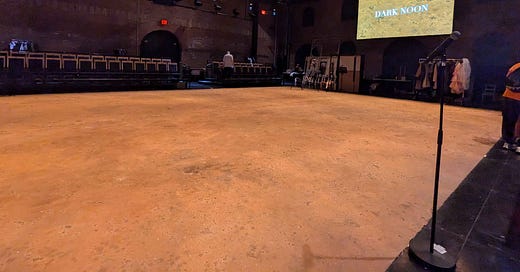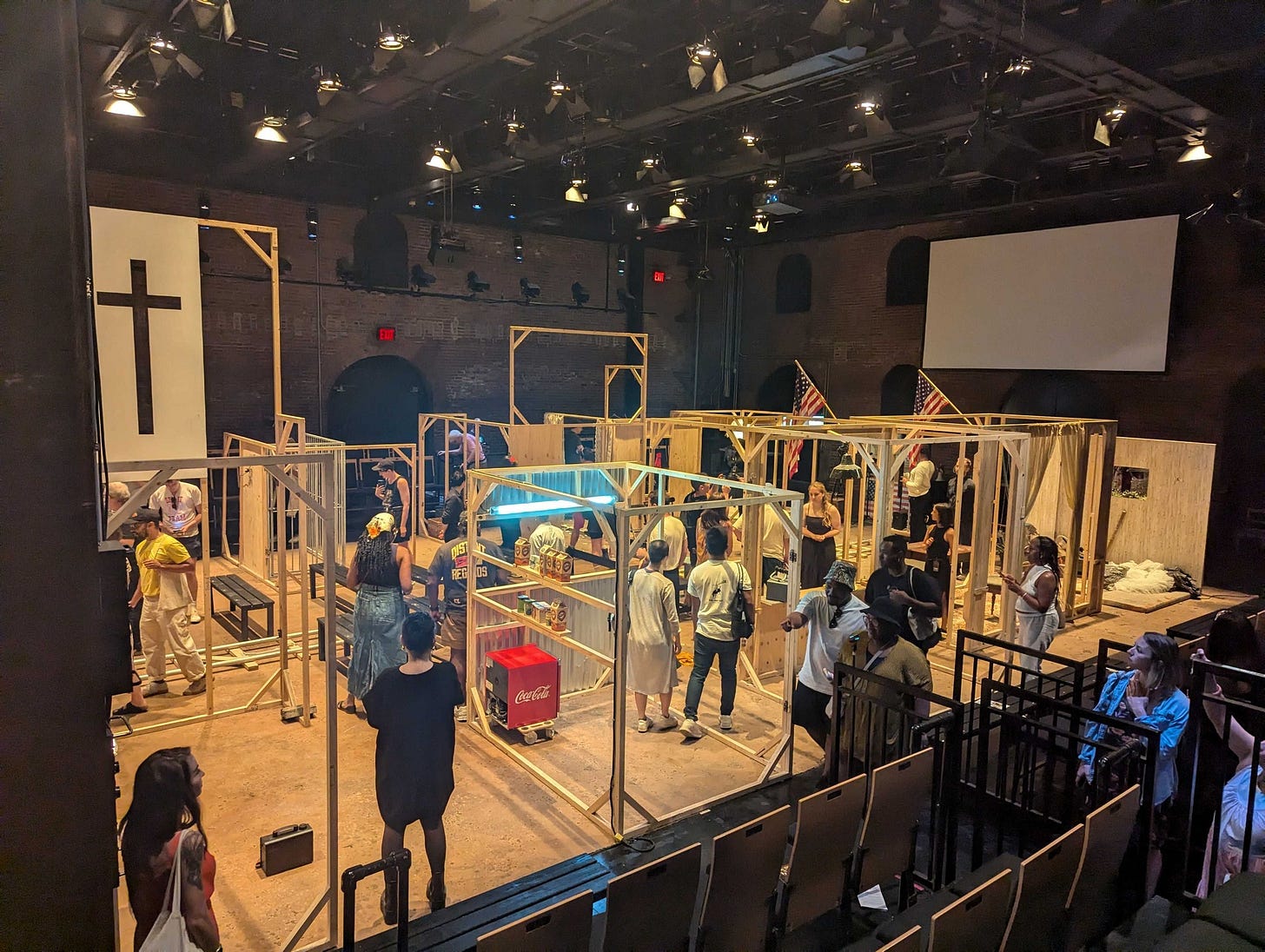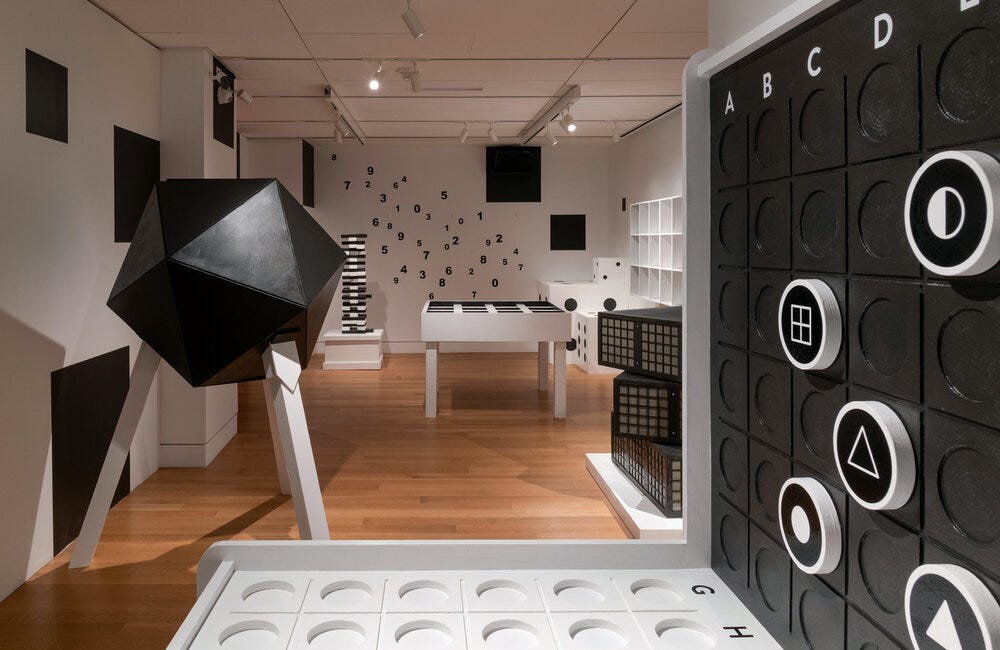Dark Noon and the Price of Immersion
What do you do when "enjoyment" isn't the primary goal of interactivity?
Earlier this month, I went to see Dark Noon, an immersive theater performance piece that retold the history of the Wild West, from the perspective of a team of South African performers. One of the unique features of the show was that it sold front-row seats as “Gold Rush tickets”, that promised the opportunity for audience participation.
And those front row Gold Rush tickets were sold at a significant discount.
That’s…not how ticketing for immersive shows usually works, and while a few friends did highly recommend the show, half the reason I went to see Dark Noon was because I was desperately curious to know what would make a show offer a more interactive experience to audiences, for a discount. But before we get to answering that question, let’s talk about the show itself.
Dark Noon is an Outsider’s Look into the American Myth
The quintessential scene in any Western film is the classic showdown: two gunslingers, facing each other down in a duel to the death. Dark Noon opens with that classic scene, before asking the audience: how did we get to a place in America where white folk were killing each other off?
Dark Noon is told from an outsider’s perspective, with an exclusively South African cast stripping one of America’s most romanticized stories of its glitz and glamour…and using the language of Western media to do so. The action is acted out on stage, but a series of prominently featured cameras frame shots to be broadcast on the main screen. The war between Native Americans and settlers is framed as a football game. A narrator offers dry commentary, treating the events on stage as if it were a documentary. And apologies for atrocities are delivered as news interviews or YouTube apology videos.
Because this play covered hundreds of years of history in a relatively short period, the relatively small cast was constantly changing costumes, with the hurried transfers frequently done for all to see - and because it was a cast of mostly Black actors telling a story often revolving around white roles, they would frequently splash on white powder to do a hurried form of whiteface so the audience could more easily identify their roles.
One of the most impactful moments of the play, for me, was when the narrator was discussing how one of the more successful campaigns to destroy the Native Americans involved stripping them of their culture, and making them assimilate. To showcase this, one of the cast members wearing a Native American costume stripped off headband and shirt, to reveal he was wearing a wetsuit underneath. He then put on a swimming cap and a pair of goggles, and shoved his head into a bag of white powder, screaming as he shook the contents around. The application of whiteface was itself an act of violence. But after removing the bag and taking off the swimming cap, another actor handed him a cowboy hat to complete the process.
Dark Noon is not a subtle play: it practically screams its message through the rooftops. And the reason behind the focus on America as told by media is showcased at the play’s end, as each of the cast members steps forward and tells personal stories about life in Apartheid South Africa - and how their understanding of the world was partially shaped by Western media, that was a dominant form of media available.
Dark Noon is a Structural Masterpiece That Built Itself From the Ground Up
Dark Noon is a story focused on holding up a mirror to the USA about the violence and abuse we tend to try and sweep under the rug. That is demonstrated literally, with how the show is structured. When the audience walks into the theater, the stage is a barren stretch of red soil.
And with every new chapter of the tale of how the Wild West grew, the actors came in and erected a building to represent the institutions and forces that inflicted that abuse on the West. The settler’s homestead in the back right corner was the first to go up, introducing the conflict between homesteaders and cowboys over grazing rights to the land. Asian immigrants were brought over to literally build the railroad lines, which in turn brought in more “civilization”. And as the stage became more and more crowded, the audience became more and more dependent on the media to provide a better view of what was really happening.
In a play about how the West was built, the play’s structure literally built the West, while shining a literal spotlight on the darker sides of that structure.
I Understand Why the “Gold Rush” Tickets Were Cheaper, Now
Finally, we come to the point of this piece: what was the immersive experience like, and why would front-row tickets to seeing the West built be priced at almost half the price of regular tickets?
The easiest answer is a matter of comfort: front row seats were on benches with no seat backs and attendees were encouraged to leave any bags at home (there was no bag check at the venue), so they partially just took a page from the airlines: you pay more for comfort. But equally important, I suspect, is exactly what Dark Noon’s immersive experience entailed.
It started out fairly simple: a cast member comes around begging for a can of Coke, during a scene where settlers are dying of thirst. After being rebuffed a couple of times, he confronts an audience member and points to a mini refrigerator not far from their seat and has them get up and get him a can of Coke. The crowd laughs.
Shortly after, when the Native Americans and settlers are having their football game, a cast member grabs a seat next to an audience member, and puts a pair of announcer headphones over his head. Every now and then, he turns to his co-host and asks for commentary. The crowd is laughing, and cheering.
Then, while displaying how “white culture exists”, a whole section of audience members are guided on stage and led through a simple line dance: men on one side, women on the other. The audience is clapping along.
Then, the camera focuses on a woman on stage, with a small dab of dark makeup on her head. It lingers with a closeup on her face. Then, the bidding starts. She’s being auctioned off as a slave, as an introduction to that particular phase of American history. She’s sold. The audience is silent. Two more audience members are pulled up and auctioned off, in similar fashion. The cast encourages us to keep cheering, like we were before. They were sold for such a good price! Isn’t that wonderful!
Audience interactions continue for the rest of the show: it is a deeply awkward and uncomfortable thing, for the rest of the show. It is intended to be that way.

“Othering” the Audience: My Personal “Gold Rush” Experience
Towards the end of the show, Dark Noon’s city has largely been constructed and I’m asked to join the person sitting next to me in the church. The actress sitting with us tells us to start praying. And then, a man runs by: “they’re coming…they’re coming”! We’re told to kneel down under the benches, and to continue praying. That doesn’t stop a man in a military outfit from coming by, and leading us to an enclosure, fenced off with barbed wire. We’re told to get on our knees, and continue to pray. Other audience members are brought over as well, who were pulled in to populate other parts of the impromptu town. Getting on our knees on the rough floor is fairly uncomfortable, but the one man who shifted out of position got a nasty glare from our guard, and he quickly returned to the position.
Then, they came over with a smoke machine and “gassed” us, before instructing us to return to our seats. We get to witness the perpetrators give a “news interview” about how they were sorry, but it really had to be done. For somewhat obvious reasons, this particular scene hit harder for me, as a Jew.
With very few exceptions, audience participation in Dark Noon was an othering experience: Gold Rush ticketholders were cast as the oppressed in the play, and made to feel intensely uncomfortable, at least for a few minutes. Presumably, that made the experience more impactful to all audience members: because those were things that were happening to “us”, as a collective audience - not just something happening within the fictional bounds of the show.

The Price of Immersion: What Exactly are You Buying?
There’s a very active portion of the immersive player base who go to immersive experiences looking for something transformative: opportunities to put themselves in unfamiliar situations, and use that to become a better, more empathetic person. Within the Larp space, the “play to lose” mantra is often (in my opinion, incorrectly) interpreted as encouragement to intentionally inflict misery upon their characters. With extreme haunts like Blackout, it’s often a more literal test of what you can tolerate.
And it’s something that those audiences will frequently pay a premium to experience. When I went to see Bottom of the Ocean, I was led through a series of 1:1 encounters that asked me to contemplate my own mortality. But with those experiences, you as the attendee are still centered as the focus.
My assumption is that Dark Noon was heavily inspired by the Theatre of the Oppressed movement - especially how it carved out a portion of the audience to serve as “spect-actors”. I’m not familiar enough with that space to speak on it, but it is a topic the NYTimes brought up in their own review of the show.
If Dark Noon was explicit about the specifics of what experience its “Gold Rush” tickets entailed, I could imagine a segment of the audience who would willingly step up to the immersive plate, and potentially even pay a premium for the privilege. However, Dark Noon was only moderately transparent about the real cost of the discount. The St Anne’s Warehouse website did make it clear that the themes of the show were intense (language pictured above)…but it didn’t necessarily stress how much those intense themes would be experienced by the Gold Rush ticketholders. And TodayTix was practically cavalier with their attitude, treating it as an upsell - framing the tickets as “the ultimate way to witness this action-packed, explosively original work”.
Under that limited disclosure model, audience members aren’t able to as effectively self-select into the more immersive player pool. And more importantly, the show depends on selling most (if not all) of the Gold Rush seats, to have a critical mass of “others” to draw upon for the show’s run. During my show, I saw a handful of regular ticket holders shifted into Gold Rush seats: presumably, because those seats needed to be filled for the show to operate as intended.
Under those constraints, I completely understand why the more interactive seats were sold at a discount. Because the show depended on the seats, they needed to be filled, and lower prices was one way to guarantee that would happen. And because Gold Rush ticket holders were likely to have a more intense experience without necessarily being prepared to expect that, a discount might help them get over the discomfort.
Final Thoughts: Immersive Answers I Still Don’t Have
Dark Noon did an incredible job at using the language of cinema and Western media in general to help me look at the Wild West from a different perspective. And hearing that story from a generation of actors still struggling through their own experiences with Apartheid made the story hit so much harder. I’ll also remember the surreal experience of seeing a stage built before my eyes for quite some time.
As for the immersive elements? Honestly, it’s been two weeks since I saw Dark Noon and I’m still trying to sort through my thoughts. I’m grateful that I saw the show because it asked questions about the role of an audience and the value of immersive that I haven’t fully confronted yet. I do think that there’s a lot of potential for shows that present audience members with more challenging experiences in exchange for a discount…but I also feel like that would work significantly better with a little more disclosure for exactly what you’re “paying” for that discount.
There’s a number of interesting experiments in factoring in player experience into costs: for Risa Puno’s Privilege of Escape, one of the reasons the escape room with a message was free for all attendees is because it was run as a test-and-control experiment, and escape room fans in the test group experienced a considerably more frustrating game, by design. Things also become complicated in interesting ways with Larps, where the line between player and staff blurs (faction leads, NPCs, and even some GMs) in ways that impact ticket prices or compensation.







